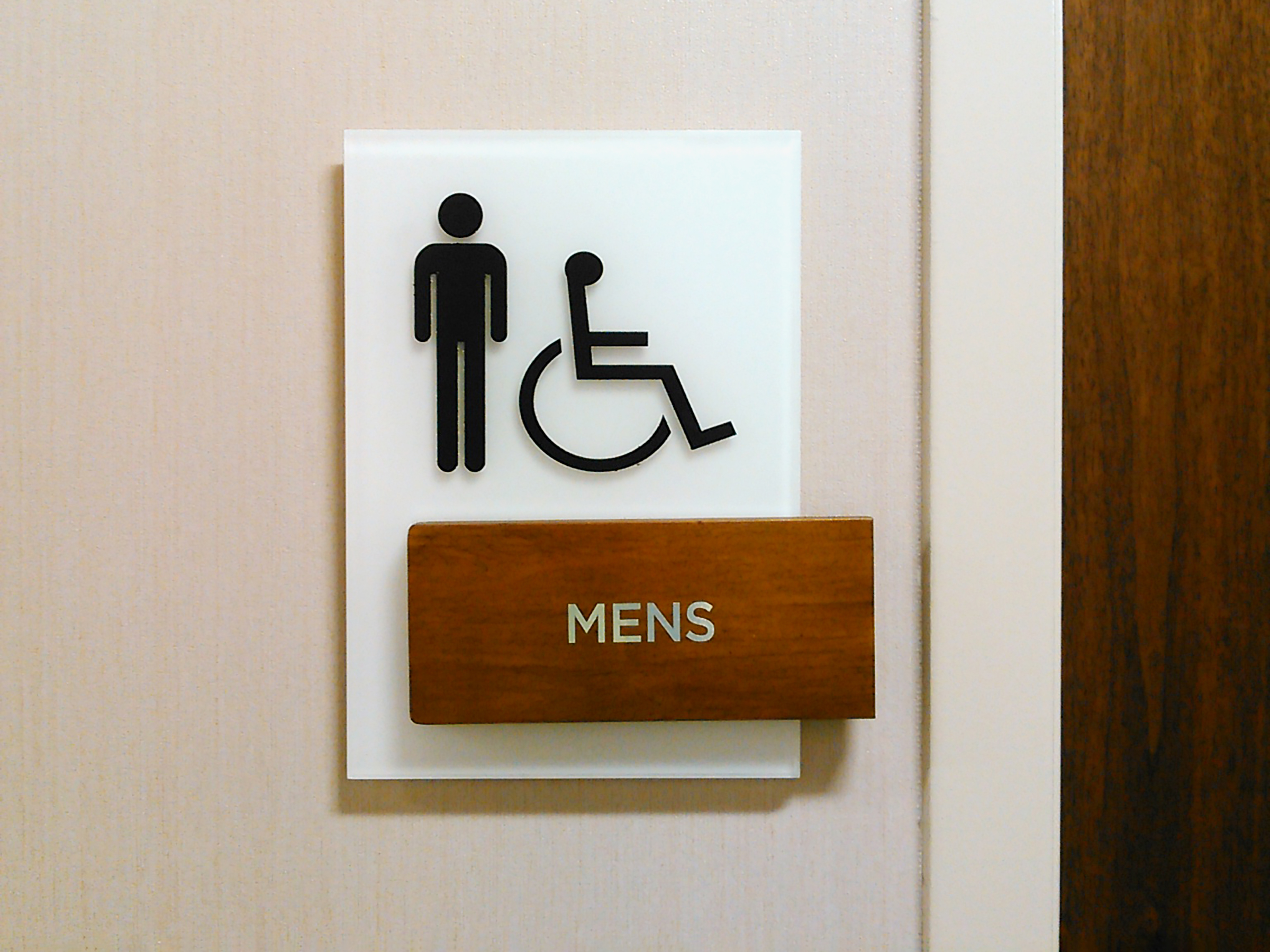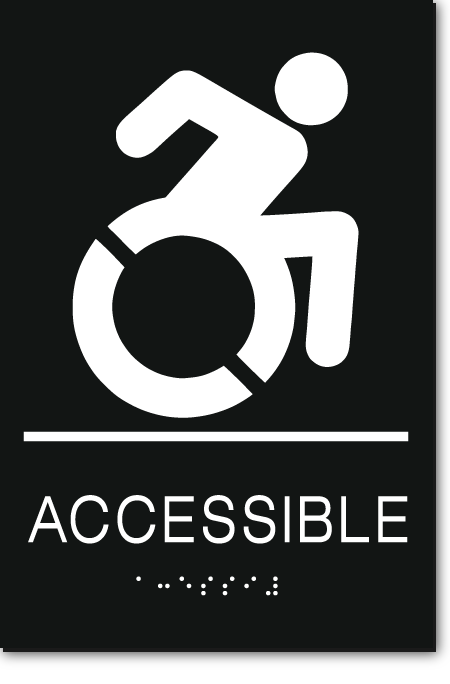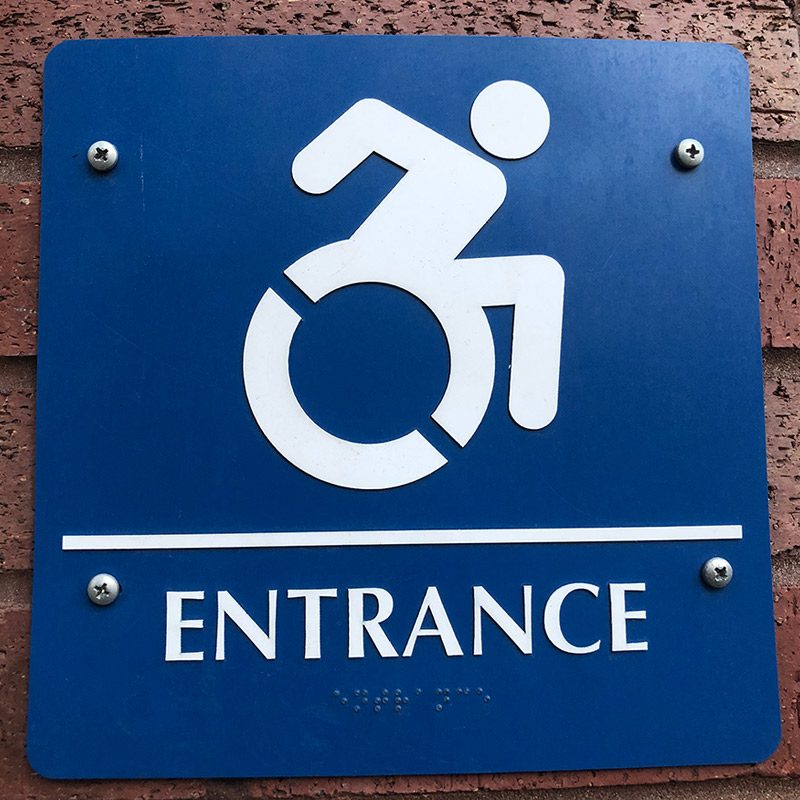ADA Signs: Vital Tools for Inclusive Atmospheres
ADA Signs: Vital Tools for Inclusive Atmospheres
Blog Article
Discovering the Key Attributes of ADA Signs for Boosted Availability
In the world of access, ADA indications serve as silent yet effective allies, making certain that areas are accessible and comprehensive for people with impairments. By integrating Braille and tactile components, these signs damage barriers for the visually impaired, while high-contrast color systems and clear typefaces accommodate varied aesthetic requirements. Their tactical placement is not arbitrary yet instead a computed initiative to promote seamless navigation. Yet, past these functions lies a deeper narrative regarding the evolution of inclusivity and the ongoing commitment to creating fair spaces. What a lot more could these indicators represent in our quest of global ease of access?
Relevance of ADA Conformity
Ensuring conformity with the Americans with Disabilities Act (ADA) is important for fostering inclusivity and equivalent accessibility in public spaces and work environments. The ADA, enacted in 1990, mandates that all public facilities, companies, and transport solutions accommodate people with impairments, ensuring they delight in the same civil liberties and chances as others. Conformity with ADA criteria not just meets lawful commitments yet additionally improves a company's credibility by demonstrating its commitment to diversity and inclusivity.
One of the key elements of ADA compliance is the implementation of accessible signs. ADA signs are designed to ensure that people with disabilities can easily browse with buildings and spaces. These indications need to follow particular guidelines regarding dimension, font style, color contrast, and placement to guarantee exposure and readability for all. Properly implemented ADA signs aids remove barriers that individuals with specials needs usually experience, thus advertising their self-reliance and self-confidence (ADA Signs).
Additionally, adhering to ADA regulations can minimize the danger of prospective fines and lawful consequences. Organizations that fall short to follow ADA guidelines might encounter penalties or legal actions, which can be both economically troublesome and harmful to their public image. Therefore, ADA compliance is integral to cultivating an equitable setting for every person.
Braille and Tactile Components
The consolidation of Braille and tactile elements into ADA signage personifies the principles of accessibility and inclusivity. These features are vital for individuals who are aesthetically impaired or blind, enabling them to browse public spaces with higher freedom and self-confidence. Braille, a tactile writing system, is necessary in providing composed details in a format that can be conveniently perceived through touch. It is normally placed under the corresponding message on signage to guarantee that people can access the information without aesthetic help.
Responsive elements prolong beyond Braille and include raised characters and symbols. These parts are made to be noticeable by touch, permitting individuals to recognize area numbers, toilets, leaves, and various other crucial locations. The ADA establishes certain guidelines relating to the dimension, spacing, and positioning of these responsive elements to optimize readability and ensure uniformity across different settings.

High-Contrast Color Pattern
High-contrast color design play an essential function in enhancing the exposure and readability of ADA signage for people with aesthetic problems. These systems are necessary as they make the most of the distinction in light reflectance between text and background, ensuring that indicators are easily noticeable, also from a distance. The Americans with Disabilities Act (ADA) mandates the usage of particular shade contrasts to fit those with minimal vision, making it a critical element of conformity.
The effectiveness of high-contrast shades depends on their capacity to stand out in numerous lighting conditions, consisting of dimly lit environments and areas with glow. Usually, dark message on a light history or light message on a dark history is employed to accomplish optimum contrast. Black message on a yellow or white history gives a stark visual difference that assists in quick acknowledgment and understanding.

Legible Fonts and Text Dimension
When taking into consideration the design of ADA signage, the selection of legible fonts and suitable text dimension can not be overemphasized. These aspects are crucial for guaranteeing that indications are available to individuals with aesthetic impairments. The Americans with Disabilities Act (ADA) mandates that fonts should be sans-serif and not italic, oblique, script, extremely decorative, or of uncommon type. These needs assist make certain that the text is quickly understandable from a distance and that the characters are distinguishable to diverse target markets.
According to ADA standards, the minimal text height ought to be 5/8 inch, and it ought to enhance proportionally with seeing range. Uniformity in text dimension contributes to a cohesive visual experience, aiding people in navigating settings effectively.
Furthermore, spacing in between lines and letters is essential to readability. Sufficient spacing prevents personalities from appearing crowded, boosting readability. By adhering to these requirements, designers can dramatically enhance accessibility, making certain that signage offers its designated purpose for all people, no matter their visual abilities.
Reliable Placement Methods
Strategic placement of ADA signage is crucial for maximizing availability and making certain compliance with legal criteria. Correctly located indicators direct people with handicaps efficiently, promoting navigating in public spaces. Secret factors to consider include presence, elevation, and proximity. ADA guidelines state that indications need to be mounted at a height between 48 to 60 inches from the ground to guarantee they are within the line of view for both standing and seated people. This basic height variety is essential for inclusivity, allowing mobility device individuals and people of differing elevations to gain access to details easily.
Furthermore, signs must be placed surrounding to the latch side of doors to permit simple recognition before Clicking Here entry. Uniformity in sign positioning throughout a facility improves predictability, reducing complication and enhancing total individual experience.

Verdict
ADA indications play an essential function in advertising accessibility by integrating attributes that address the demands of people with impairments. Including Braille and responsive elements guarantees essential info comes to the aesthetically impaired, while high-contrast color pattern and understandable sans-serif fonts improve exposure throughout numerous lighting conditions. Effective positioning approaches, such as appropriate mounting heights and tactical places, additionally facilitate navigation. These elements collectively foster a comprehensive setting, highlighting the importance of ADA conformity in making certain equivalent access for all.
In the world of availability, Visit Website ADA indications serve as quiet yet effective allies, making certain that rooms are accessible and inclusive for people with specials needs. The ADA, passed in 1990, mandates that all public facilities, companies, and transportation services accommodate people with disabilities, ensuring they enjoy the very same civil liberties and chances as others. ADA Signs. ADA indications are designed to make certain that people with impairments can easily browse through buildings and areas. ADA guidelines stipulate that indications ought to be placed at an elevation between 48 to 60 inches from the ground to guarantee they are within the line of sight for both standing and seated people.ADA signs play an essential function in promoting access by incorporating features that attend review to the needs of individuals with handicaps
Report this page